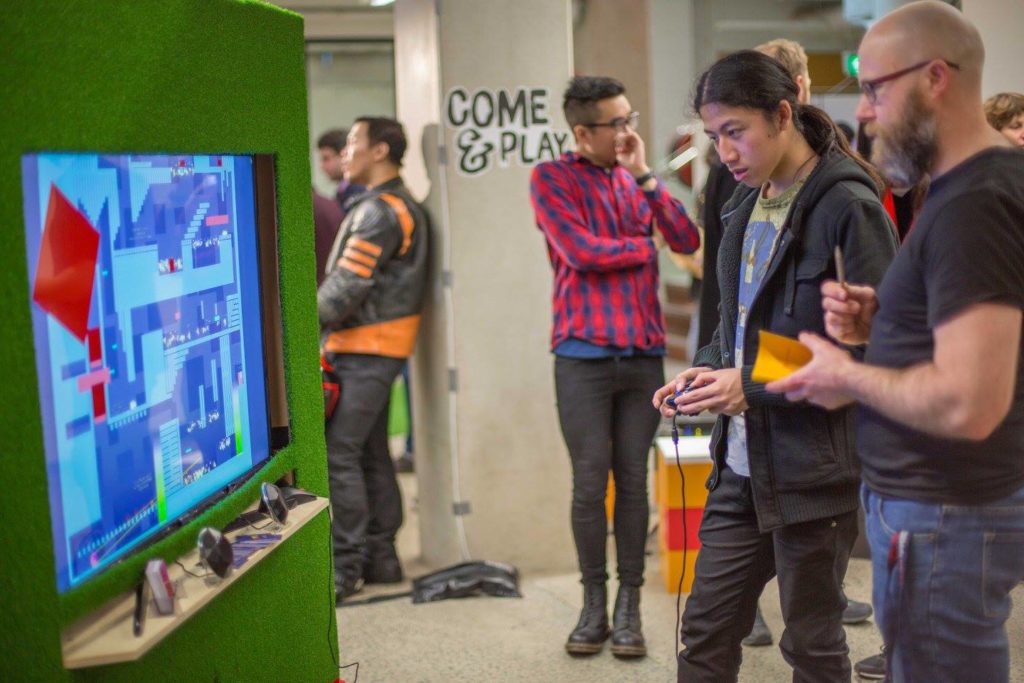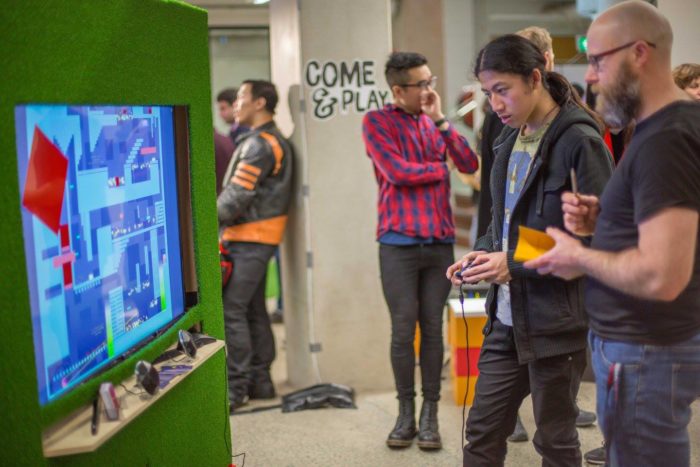This week we’ve had to take some time off from development in order to get ready for a public showing of Level Squared.

There’s going to be a number of occasions over the coming months where we’ll be carrying out public showings of Level Squared, and one thing that we learned last year is that it is important to get these right.
The absolute worst thing that can happen is having your play test or showing ruined by a faulty HTML cable, or a busted controller or some other peripheral that is entirely within your control (and yes, both of these things happened to us at public tests last year).
These early lessons have possibly left me a little on the paranoid side when it comes to preparing for shows. But after sitting in front of a television for an hour with a flickering, constantly resetting image of our game on it, I’m going to err on the side of caution.
So – here are my guidelines for preparing for a public showing (built up from experience as well as copying from more experienced game developers):
- Be ready early.
- Know where you are setting up. Scout out the location well in advance.
- Know the equipment that you will be playing on. Ideally, all of the equipment will be your own. All the equipment will never be your own.
- Test everything before any players arrive.
- Have spares! Spare cables, spare controllers, spare builds on spare USBs. As far as is practicable have a replacement for every single piece.
- If the area is not locked down (eg, IGDAM) try to get a position that ensures that your screen is facing out into the room/towards the entrance. This will ensure that people will see your game as they arrive.
- Have something that will draw players towards your station. Posters, lights, sounds etc.
Feel free to steal and adapt as needed!
The event that we are preparing for at the moment is Swinburne Open Day. We’ve been invited along as one of their past success stories to try to get students to pick Swinburne when they graduate from High School. And that suits me, we got great support from Swinburne last year, and it gives us another opportunity for a public showing, for little expense.
Plus they called us gaming celebs:

However, it has meant that we have had to develop a new demo build.
Up to now, this year has been all about developing new content for the game with a view to a full length game. And that doesn’t lend itself too well to a demo. We don’t really want to put a player down in front of two+ hours of content. We’d rather cycle through a large number of players, while still giving them a taste of the full game.
So we’ve made a build out of a selection of levels from the full game which show off all of our new systems and mechanics, while still presenting around 10 minutes of play time. This has also required the development of a narrative specific to this build which is thematically similar to the full game narrative and tone, but delivers a much smaller story within the demo build.
And now that we’ve selected a suite of levels to show off, this week has been all about making sure that build will be stable and solid to ensure that we have a good showing, and that all of the feedback that we get is useful and actionable.
So if you’re free on Sunday 29 July and in the Hawthorn area, and interested in studying Game Development at Swinburne – come and check us out!
